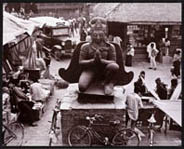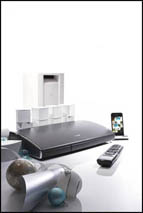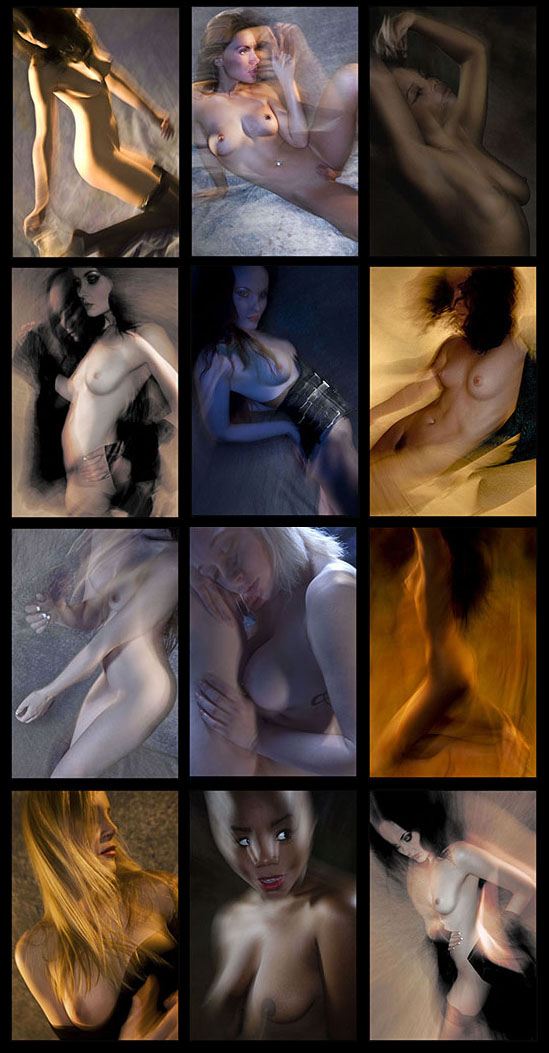Let’s Get Technical
(strictly for photography nerds; for larger size images go to my PHOTOART)
All my photography has been digital since 1998 and I retouch most of my work extensively; however, many of my Classic Still Lives were shot on 6x8cm roll-film, 4x5”, 5x7” or 10x8” sheet film - like for instance the still lives below - then scanned and retouched. This is why I like digital photography (and Photoshop) so much: When I was an apprentice (in Germany, in a previous life) I learnt to retouch transparencies.
 8x10" trany, Cambo camera, Schneider 305mm G-Claron
8x10" trany, Cambo camera, Schneider 305mm G-Claron
 5x7" trany, Linhof Technika, Schneider 210mm G-Claron
5x7" trany, Linhof Technika, Schneider 210mm G-Claron
 4x5" trany, Cambo camera, Schneider 210mm G-Claron
4x5" trany, Cambo camera, Schneider 210mm G-Claron
But one day - in the 1980s - I received a call from an ad-agency production manager ... “what the f*** are you doing with my transparencies?” Oh dear, one of those new-fangled electronic scanners had shown up the ink & brush strokes ... and it did not look pretty. Unfortunately, from then on, no more retouching on tranys, and I really missed it. But when I did my first pictures on a digital camera (in 1998, with a Leaf three-shot 4mp back on a Sinar P2 view camera; the whole outfit cost me about $90,000 ... for FOUR mega pixels!@#$%&*) I realized I could retouch my pictures again, and I was sold on digital.
More samples from the olden (film-) days are my ancient black & white shots ...
 Nikon F with 35mm f/1.4 lens, Kodak Tri-x film
Nikon F with 35mm f/1.4 lens, Kodak Tri-x film
... which I used to shoot first with Nikon, then with Leica and Hasselblad, on Kodak Tri-x, developed in D76 and printed on AGFA Record-Rapid paper, for its nice, warm tones.
 Leica M4 with 35mm Summilux f/1.4 lens, Kodak Tri-x
Leica M4 with 35mm Summilux f/1.4 lens, Kodak Tri-x
Now-a-days I re-shoot those prints with my EOS 1 Ds; it's a great scanner!
Still in the old film days ... in the mid 1990s I got disillusioned with my Hasselbald. By then I had traded my trusty 500CM for a 2000FC, which was a dog of a camera; great lenses though ... I'm talking about the 110mm f/2 as well as the 350mm f/4 - with a 2x converter I had a 700mm f/8 (check out Commercial Work 16/137).
 Hasselblad 2000FC, 350mm f/4 lens, 2x converter = 700mm f/8
Hasselblad 2000FC, 350mm f/4 lens, 2x converter = 700mm f/8
So I traded up from the Hasselblad to the (now discontinued) Fuji GX680 ... my last film camera. What a beauty that was! With front movements (like my TSE lenses now), it shot 6x8cm frames on roll film ... the camera had a great feature: Aperture priority Auto Exposure, with the shutter speed adjusted automatically. This was especially good in situations where the light changes in an instant and there is no time to use a light meter (like with my old Hasselblad). The exposure was spot on ... even in the most challenging situations, like helicopter photography. Also great for still lives, and especially with food shots - where you have to be quick - the motorised roll-film back came into its own.
 Fuji GX680 with 100mm f/4 lens, Kodak Ektachrome film
Fuji GX680 with 100mm f/4 lens, Kodak Ektachrome film
When digital came in I was a bold, early adaptor... indeed, in those early days there were many who thought digital would never work in professional photography ... film and a good scanner, they said, would always be better.
 4mp Leaf DCB three-shot digital back on a Sinar
4mp Leaf DCB three-shot digital back on a Sinar
My first digital camera was a Sinar, with the DCB II, 4mp 24x24mm 'digital camera back'. The set-up was a three-shot affair, with 3 different exposures, each using a Red, Green and Blue filter to arrive at a composit RGB file. Nevertheless, I soon traded up to the 6mp single-shot version with a 24x36mm chip. The year is 1998; my initial investment in digital technology was $150,000 ... this included the Sinar camera where the 4mp digital camera back cost $40,000; all up the camera - including the rock-solid studio stand - cost $90,000
 6mp Leaf Volare three-shot digital back on a Sinar view camera
6mp Leaf Volare three-shot digital back on a Sinar view camera
Things really changed when Canon brought out the first full-frame digital SLR, the 11 mega pixel Canon EOS 1 Ds, in 2002 ... now I shoot with the 21mp version, all of my people pictures, but also my still life shots. For the still lives I use two TSE (tilt/shift) lenses, 45mm and 90mm; because there is one thing that's difficult to achieve in Photoshop ... depth of field. Anyway, the shift function of the lenses is not that valuable anymore - it is easy to correct perspective in PS - but depth of field is a different story ...
 Canon EOS 1 Ds with 45mm TSE lens
Canon EOS 1 Ds with 45mm TSE lens
... as is evident in my jewellery shots, which are shot with the 100mm Macro lens and the 90mm TSE lens. Don't get fooled here ... these pictures are quite complicated; they are put together from about a dozen or two (or indeed three) individual shots. The Macro lens does not have much depth of field at all ... and the depth in the image is achieved the hard way: By pulling the jewellery into focus mm by mm - you need an attachment to move the camera forward mm by mm, you don't touch the focus ring on the lens - as you shoot a bunch of frames and comp them together. There's roughly three hours photography in these pictures, and about two to three days retouching in each of them.
 Canon EOS 1 Ds with 100mm Macro lens
Canon EOS 1 Ds with 100mm Macro lens
Here's an example for controlling perspective in Photoshop ... just about all of my shots - but especially the architectural images - have their perspective controlled.
 Canon EOS 1 Ds with 70-200mm Zoom lens
Canon EOS 1 Ds with 70-200mm Zoom lens
For my Photoart work my normal lenses are the classic combo of 24-70mm + 70-200mm and for longer-lens work I use the 2x converter, as in this photo of the moon rising over the Opera House ... it's shot at 2x 200mm = 400mm; btw, this phenomenon - where the full moon rises at dusk in that very spot - occurs just once a year. It took me three years to get this shot ... I once saw it happening when I crossed the Harbour Bridge, I came back the next evening to shoot it, but the moon rose an hour later and it was too dark. I then researched the astronomical aspect of the scene and planned to shoot it the next year. But guess what ... it was cloudy. I got the shot the year after (yeah, I know, I could've done it all in Photoshop ... tell someone who doesn't know!)
 Canon EOS 1 Ds with 70-200mm f/2.8 zoom lens + 2x converter = 400mm f/5.6
Canon EOS 1 Ds with 70-200mm f/2.8 zoom lens + 2x converter = 400mm f/5.6
One word to the smart-alecs who thought I should've just dropped the moon into that shot and be done with it. There is a problem with digital: Anything is possible, and many people do just that: They combine unrelated items into the one shot. I don't do that, I like to preserve an aura of authenticity in my pictures ... I have said before that I retouch and manipulate my shots a lot, however, I do not like to make composites where the different element stem from different scenes. The furthest I go with manipulation is that I may pull together in the one shot items that occurred with a certain time-delay, say a few minutes, or even an hour. Take this shot ...
 Canon EOS 1 Ds with 24-70mm Zoom lens
Canon EOS 1 Ds with 24-70mm Zoom lens
... I knew exactly what I wanted, namely that post-sunset glow. But that light occurs about 1/2 hour after the sunset, and by that time the water in the foreground was black and the lovers on the bench seat had left. So the picture is a composite of 4 shots, taken with the camera mounted on a tripod, over a period of an hour (the fellow on the right, sitting on the fence with his video camera, is the 4th shot).
For portraits I often use the 50mm f1.2 - I really like this lens, the low-light ability - of course - but the shallow focus too; and - surprise - the lens I had before the f/1.2 was the f/1.4 (not a pro-L lens) and, guess what, that lens is brilliant too, at a sixth of the cost (honestly, sometimes I think I can't tell the difference).
 Canon EOS 1 Ds with 50mm f/1.2 lens
Canon EOS 1 Ds with 50mm f/1.2 lens
The last lens to round off my collection is the 15mm fish-eye ... all my Gay & Lesbian Mardi Gras shots are done with it.
 Canon EOS 1 Ds with 15mm fish-eye lens
Canon EOS 1 Ds with 15mm fish-eye lens
For jobs that require higher resolution I hire the Hasselblad with a high-res digital back; this makes a job appr. AU$1,250 per day more expensive.
 Hasselblad H4D-40 with 80mm f/2.8 lens
Hasselblad H4D-40 with 80mm f/2.8 lens
My editing and retouching is done on a MacBook Pro, with a 30” monitor and a Wacom tablet. I use two 2tb Western Digital drives for Time Machine; a word on Time Machine: Don't rely on it for a back-up, it does mal-function at times (in my experience); but it's great to recover a file when you've made a mistake - say where you saved a file by accident as a reduced-size jpeg for emailing, but didn't keep the original psd file - with TM you can go back an hour and recover it.
For storage I used to use a 5tb Silicon Memory Raid array and later on a 20tb LaCie Big RAID drive, as well as the two 2tb Western Digital hard-drives; one of the WDs kept in a separate room and they are swapped over every couple of days, after every bit of work I have completed (ever heard a story where a place was broken into and not only the computer was stolen, but the back-up drives too?! I’ve heard three. Never keep all your gear in close vicinity). Then I have another little LaCie 5tb d2 Quadra in a small Pelican case, which is stored off-site. I update it after every shoot ... this way all my data is also on a drive away from my premises, and safe in case of fire.
I am a world champion at backing up! I am one of the many photographers who have been burnt - I once ran a Norton Utilities over a freshly upgraded Mac OS 9 ... with disastrous results; both internal hard drives were fried, never to be recovered. I lost a few single shots and one folder with a whole series of pictures; most of my work was and still is backed up on CDs and DVDs ... but guess what, you can’t trust them: Twice now I couldn’t open an old back-up CD.
I stopped using desktop computers, the MacBook Pro is adequate ... this way I have the same computer on location as in the studio. I shoot raw only. The combo of Bridge and Photoshop works for me for my Photoart work. For jobs I shoot into Capture One.
Often when I go out, and always when I see clients, I take with me my trusty old MacBook Air 64 gb (these days [2019] a MacBook) - the very first Solid State Memory computer that came out. I've been saying for years now: in a year or two there won't be any more mechanical (spinning) hard drives in computers but SSM.
Incidentally, I resisted the MacBook Air for a long time ... I kept writing to Apple about my preference for my old 12" PowerBook G4. I have two of them and they still are in use (the older one hails back to 2002); my point was that I never really liked the wide cinema screen format, the squarer 12" screen is better suited to photography, since - unlike videographers - we shoot vertical (portrait) as well as horizontal (landscape). In the meantime I have gotten used to the cinema screen-format (probably because I indeed now watch movies on my computer); nevertheless, for photography I would prefer a computer with a close-to-square screen. Anyway, I now really like the 'Air' format ... slim, light - with the external optical drive (my guess is we'll soon see this in the 'Pro' series too)(Update: Told ya so!)
My lighting used to be ProFoto 5 – I had two 4,800 - but over the years I switched to Visatec monoblocks. I have a Solo 400 B, an 800, three 1600 and three 3200 (they have a truly stupid naming convention, the 3200 for instance is a 1,200 jules unit. Go figure!) with a bunch of softboxes, barndoors and honeycomb grids. In the studio I use my trusted old Foba rods & joints combitube system ... very handy; my tripods and heads are Manfrotto, I particularly like the little geared 410 head for my still life shoots.
All right, that’s my commercial work. But sometimes I love to escape, to leave this planet and visit that other world – that parallel universe – where I shoot nudes.
 Canon EOS 1 Ds with 24-70mm Zoom lens
Canon EOS 1 Ds with 24-70mm Zoom lens
It’s an escape alright. But how are my erotic photoart shots done? I say in my Alchemy:
“What is the difference between ‘Fine Art Nude Photography’ (mostly black & white, where someone waxes on lyrical about 'celebrating the female form') and my Erotic Photoart? For me it's this: The former often is staged, static and stationery.
“In my photographs there is movement ... by the model, my camera, the lights; when I shoot, I'm somewhat out of control. You see, I’ve been an ad shooter for 40 years. Always in control; always restrained. But now the chains are off. When I shoot my nudes, I’m free. I take chances. I allow for the unexpected to happen, the uncontrollable; and for 10 shots that I may consider, I will shoot 100 frames. In the end I’ll use just 1, which I then will retouch, polish, enhance. I'll find a frame I like (but if I don't, doesn't matter; I'll move on to the next shot) and when I bring the raw shot alive in the editing, I turn it into Photoart ... with love, care, dedication. I like to think my best shots are mysterious, indeed art.
“I love that process: not to have to worry about the shot while I shoot, but to feel the woman in front of me: her moves, her features and her personality ... it's the sublime experience of photographer & model in non-physical union; where I endeavour to use my intuition - and my professional expertise - to enrich your life as I bring her beauty to you as well as an appreciation of art.”
So there you have it: Out of control; movement ... by the model, my camera, the lights. Mostly I shoot with a long exposure time (about ¼ sec), expose with tungsten lights - there is this cute little light source I got the other day, little battery run LED lights (I've got four of them) designed to be used as video lights ... and give the picture its sharp center with an on-camera flash, a Canon Speedlight 580EX; great fun ... I shoot my close-ups with the 50mm f1.2 wide open, to get that shallow depth of field.
Sooo much fun.
That’s all, folks.
Now go forth and practice.
